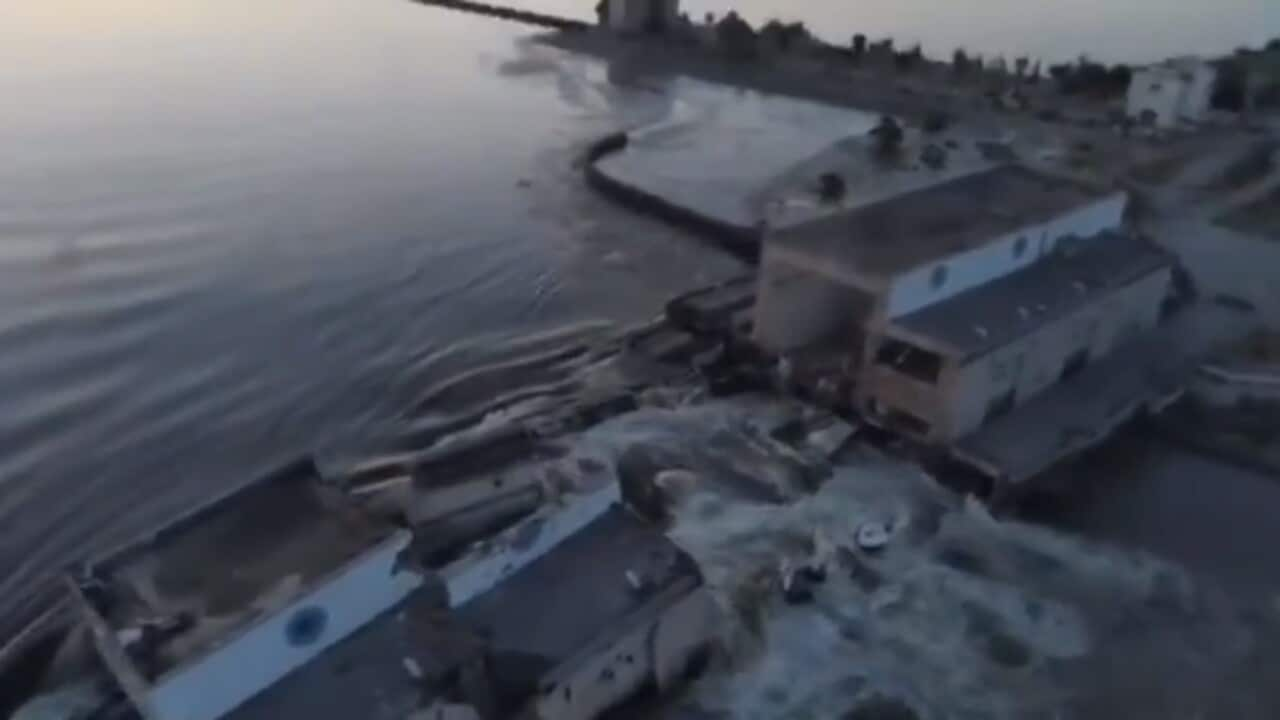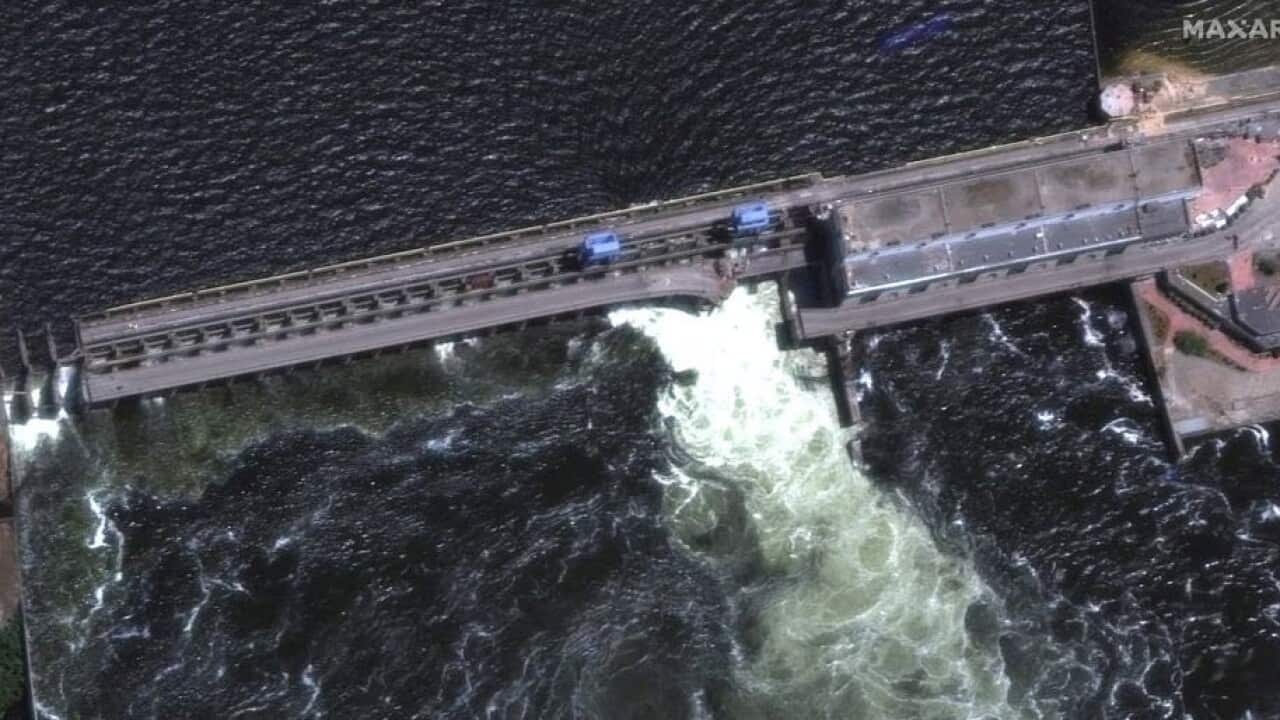The destruction of the Nova Kakhovka dam came just as Ukraine’s much-anticipated counter-offensive seemed poised to begin.
The breaching of the dam, apparently caused by a massive explosion or explosions, has spilled water from a 16 sq km reservoir across a huge area of the Kherson region of Russian-occupied southern Ukraine.
Thousands of people have been evacuated.
The dam’s destruction has led Moscow and Kyiv to accuse each other of what is arguably a war crime.
Kremlin spokesman Dmitry Peskov was conveniently well-prepared with his statement that:
“We can already unequivocally declare (this was) deliberate sabotage by the Ukrainian side,” declaring that Kyiv’s aim was to deprive Crimea of water."
There are precedents in Russia’s history for such action.
Stalin ordered the destruction of a dam across the Dnipro river in 1941 in the face of invading German forces.
Russia also practiced a scorched earth policy during Napoleon’s invasion in 1812, leaving the French army little to live on and only the burning ruins of Moscow to capture.
Devastating destruction of things that it claims to value appears part of the Russian way of war.
Who benefits from the destruction of the Kakhovka dam?
It is important to note that thus far there is no conclusive proof as to how the dam was breached, although there are widespread reports of an explosion in the early hours of Tuesday morning.
But, despite the competing claims in this instance, the key question is who is likely to benefit most from what could develop into a major disaster far beyond the banks of the Dnipro river.
According to Mykhailo Podolyak, one of Ukrainian President Volodymyr Zelenskyy’s most senior advisers, the answer to this question is clear: to thwart the Ukrainian offensive in this area.
Given where the dam is located, such an argument makes sense.
The enormous flood that it has triggered is likely to devastate vast areas on both banks of the Dnipro south towards Crimea.
This will make offensive operations by Ukrainian ground forces in this area difficult, probably for months to come, and without similarly weakening Russian defensive lines.
Moreover, it will also make it more difficult for Ukrainian forces to advance further towards Crimea, the peninsula that Russia has illegally occupied since 2014.
The dam itself also featured a roadway that Ukrainian forces could have used to advance into the Kherson region as part of their counter-offensive.
The Dnipro river, now swollen with flood waters, is currently much more difficult to cross for any advancing forces.
Crimea is also affected in another way by this man-made disaster: it crucially depends on the Nova Kakhovka reservoir for drinking water and for irrigation.
Being cut off from such supplies, possibly throughout the summer, will have immediate and longer-term humanitarian and economic impacts, the scale of which is difficult to estimate at this time.
Such an act of economic self-harm also begs the question of how committed Russia is to its future in Crimea.
It looks more like a bid to inflict long-term damage to the viability of Ukraine as a functioning society and economy.
Is the Zaporizhzhia nuclear plant at risk?
A third dimension relates to the Zaporizhzhia nuclear power plant, Europe’s largest such facility.
It has been under Russian control since the early weeks of the invasion last year, and the supply of cooling water for its reactors is in jeopardy, although are that the situation is under control.
The apparent willingness of Russia to target infrastructure in this way can also be read as an indication that Russia lacks the ability to thwart the Ukrainian counter-offensive with conventional military forces.
Instead, the Kremlin seems prepared to employ economic and environmental vandalism in an effort to turn the tide in this conflict.
A new phase in the war?
The attempt to blame the action on Kyiv is reminiscent of earlier episodes where the Kremlin attempted to construct a narrative about Ukrainian plans to detonate a dirty bomb or accuse Washington of running secret biological and chemical weapons laboratories in Ukraine.
The destruction of the Nova Kakhovka dam points to a new phase in this war.
It demonstrates Moscow’s effort to control the narrative as to who is responsible for the most heinous acts in the conflict after many months of negative coverage of the Russian conduct of the war.
The Kremlin has also sought to make the most of drone attacks on Moscow which it has similarly painted as acts of “terrorism”.
But the destruction of a dam that held back a body of water the size of America’s Great Salt Lake and provides hydroelectric power and drinking water and irrigation to Crimea suggests a callous disregard for the inhabitants, many of them ethnic Russians.
Despite the Kremlin’s rhetoric, what this episode suggests is that Russia is less interested in liberating Ukraine from its present leadership than it is in destroying its ability to function as a sovereign nation.
The forced deportations, kidnapping of 19,000 children and bombing of civilian areas are all aimed at depopulation and long-term damage.
This action is part of that approach, of destroying the country for years to come.
But the likely effect of such destructive acts on the population of Ukraine will be to strengthen their resolve to liberate their country, and beyond that to end the Russian threat to their nation in the future.
Stefan Wolff, University of Birmingham and David Hastings Dunn, University of Birmingham




